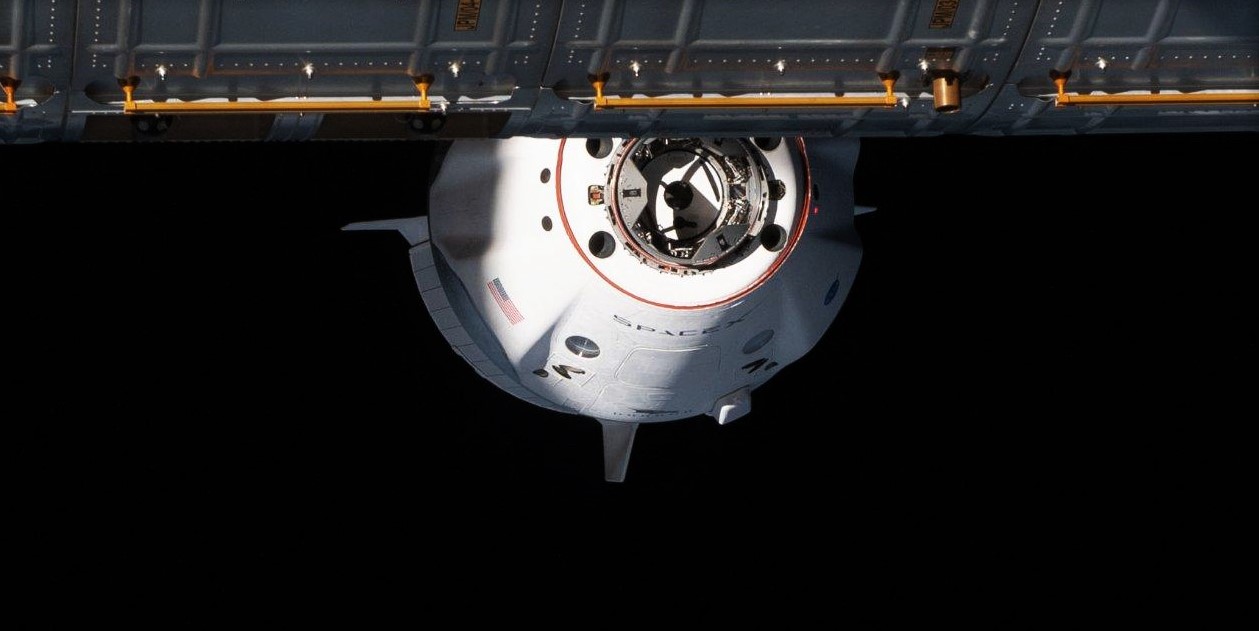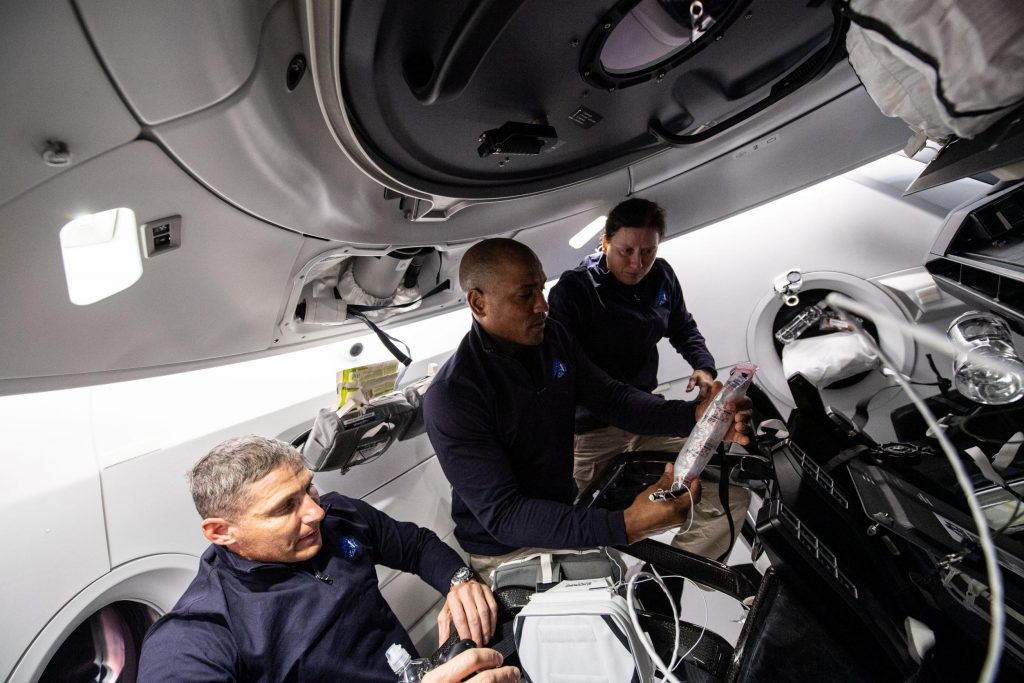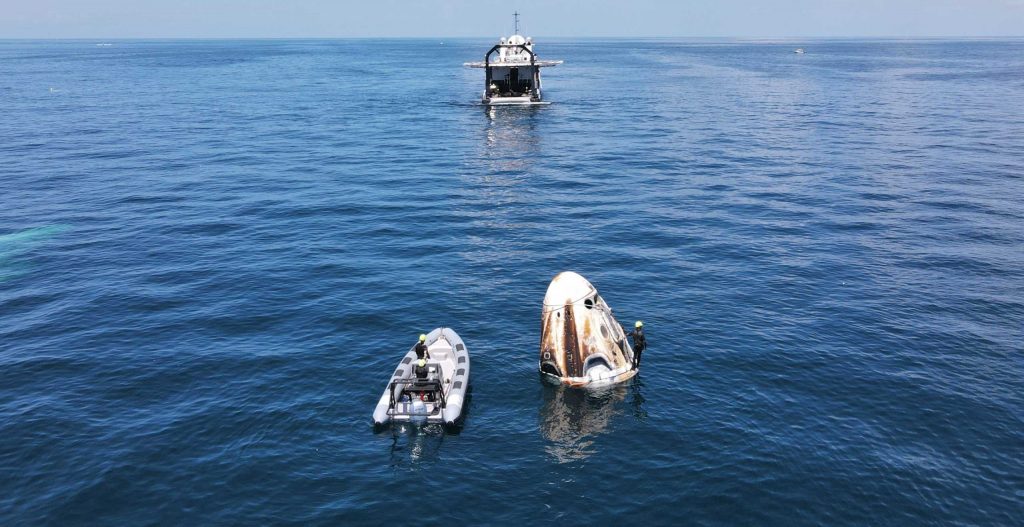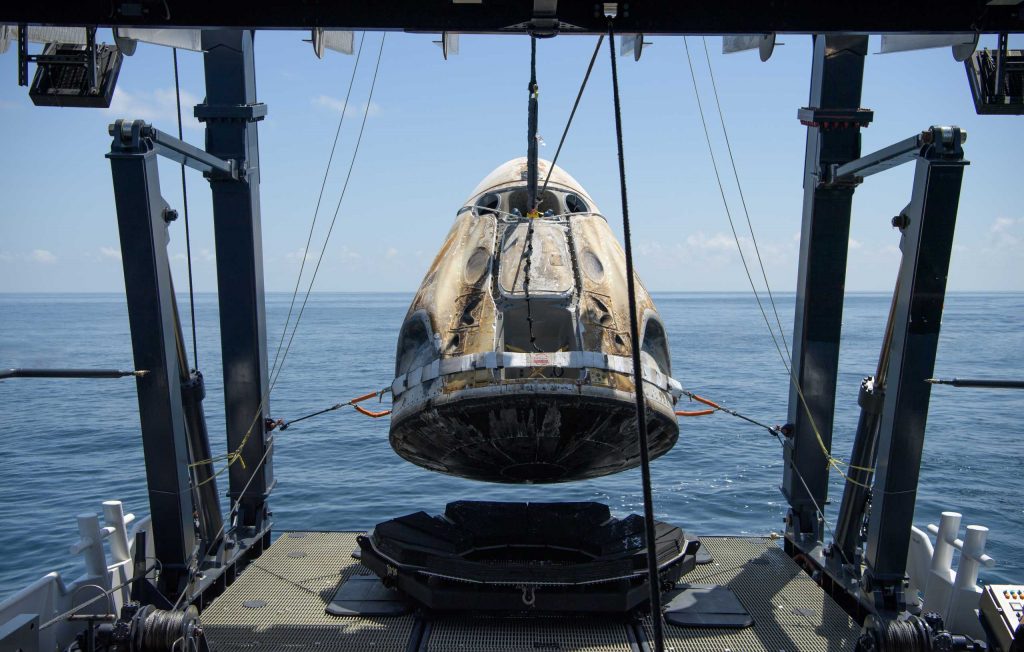

News
SpaceX private astronaut launch debut to reuse Crew-1 Dragon spacecraft
A former NASA astronaut now employed by Axiom Space says that SpaceX’s private astronaut launch debut will reuse the same Crew Dragon spacecraft currently supporting NASA’s Crew-1 mission in orbit.
Currently just a few weeks into a planned six-month stint in orbit, potentially marking the longest uninterrupted flight of an American spacecraft ever, Crew Dragon capsule C207 and an expendable trunk section arrived at the International Space Station (ISS) on November 16th. Known as Crew-1, the mission represents SpaceX and NASA’s commercial operational astronaut launch debut, carrying four astronauts to the ISS.
Crucially, the mission has been an almost flawless success so far and Falcon 9 has now completed four Crew Dragon launches without issue. On the Dragon side of things, the Crew-1 spacecraft performed a bit less perfectly than those tasked with flying Demo-1 and Demo-2, but SpaceX handled the minor issues that arose with the professionalism and composure of a team far more familiar with human spaceflight.

Early success aside, there is still some definite uncertainty ahead of Crew Dragon. While several Russian spacecraft have decades of experience spending at least several months at a time in orbit, a crewed US spacecraft has never spent more than 84 days in orbit. SpaceX itself actually beat out NASA to secure the second-place record with Crew Dragon’s 63-day Demo-2 astronaut launch debut, completed with a successful reentry and splashdown on August 2nd.

However, Crew-1 is expected to more than double that previous US record and almost triple SpaceX’s own second-place record, spending roughly 180 days (six months, give or take) in orbit. Barring an unprecedented space station or spacecraft emergency, Crew Dragon C207 will undock from ISS, reenter Earth’s atmosphere, and splashdown in the Gulf of Mexico or the Atlantic Ocean sometime in May 2021. Of course, as the first recoverable US spacecraft to spend anywhere close to that long in orbit, the Crew-1 Crew Dragon will be closely monitored to ensure the safety and reliability of its intricate reentry and recovery systems after some six months exposed to the extremes of space.
Still, success is by far the likeliest outcome. When Crew Dragon C207 splashes down, its four astronaut passengers will be carefully extricated and the inspection and refurbishment process will begin almost immediately thereafter. Crew-1 will technically be the second Crew Dragon spacecraft to be refurbished after an orbital spaceflight, following Demo-2 capsule C206’s inaugural Dragon 2 reuse perhaps just a month or two prior.

The Demo-2 Crew Dragon capsule is currently scheduled to fly a second time as early as March 31st, 2021 on SpaceX’s Crew-2 mission, ferrying another four astronauts to the ISS. If successful, Crew-2 will represent the first commercial astronaut launch ever to reuse both an orbital-class rocket booster and an orbital spacecraft, and the NASA-overseen process of refurbishment and re-flight will thus pave the way for future flight-proven astronaut launches. That includes private company Axiom Space’s first private AX-1 astronaut launch, which is currently scheduled to launch as early as Q4 2021.
AX-1 will be captained by former NASA astronaut Mike Lopez-Algeria and carry three other private astronauts, including Israeli multimillionaire Eytan Stibbe. SpaceX will thus be tasked with launching Israel’s second astronaut ever after Ilan Ramon was killed when a heat shield design flaw caused NASA Space Shuttle Columbia to break up during reentry in 2003.
News
Tesla launches in India with Model Y, showing pricing will be biggest challenge
Tesla finally got its Model Y launched in India, but it will surely come at a price for consumers.

Tesla has officially launched in India following years of delays, as it brought its Model Y to the market for the first time on Tuesday.
However, the launch showed that pricing is going to be its biggest challenge. The all-electric Model Y is priced significantly higher than in other major markets in which Tesla operates.
On Tuesday, Tesla’s Model Y went up for sale for 59,89,000 rupees for the Rear-Wheel Drive configuration, while the Long Range Rear-Wheel Drive was priced at 67,89,000.
This equates to $69,686 for the RWD and $78,994 for the Long Range RWD, a substantial markup compared to what these cars sell for in the United States.
🚨 Here’s the difference in price for the Tesla Model Y in the U.S. compared to India.
🚨 59,89,000 is $69,686
🚨 67,89,000 is $78,994 pic.twitter.com/7EUzyWLcED— TESLARATI (@Teslarati) July 15, 2025
Deliveries are currently scheduled for the third quarter, and it will be interesting to see how many units they can sell in the market at this price point.
The price includes tariffs and additional fees that are applied by the Indian government, which has aimed to work with foreign automakers to come to terms on lower duties that increase vehicle cost.
Tesla Model Y seen testing under wraps in India ahead of launch
There is a chance that these duties will be removed, which would create a more stable and affordable pricing model for Tesla in the future. President Trump and Indian Prime Minister Narendra Modi continue to iron out those details.
Maharashtra Chief Minister Devendra Fadnavis said to reporters outside the company’s new outlet in the region (via Reuters):
“In the future, we wish to see R&D and manufacturing done in India, and I am sure at an appropriate stage, Tesla will think about it.”
It appears to be eerily similar to the same “game of chicken” Tesla played with Indian government officials for the past few years. Tesla has always wanted to enter India, but was unable to do so due to these import duties.
India wanted Tesla to commit to building a Gigafactory in the country, but Tesla wanted to test demand first.
It seems this could be that demand test, and the duties are going to have a significant impact on what demand will actually be.
Elon Musk
Tesla ups Robotaxi fare price to another comical figure with service area expansion
Tesla upped its fare price for a Robotaxi ride from $4.20 to, you guessed it, $6.90.

Tesla has upped its fare price for the Robotaxi platform in Austin for the first time since its launch on June 22. The increase came on the same day that Tesla expanded its Service Area for the Robotaxi ride-hailing service, offering rides to a broader portion of the city.
The price is up from $4.20, a figure that many Tesla fans will find amusing, considering CEO Elon Musk has used that number, as well as ’69,’ as a light-hearted attempt at comedy over the past several years.
Musk confirmed yesterday that Tesla would up the price per ride from that $4.20 point to $6.90. Are we really surprised that is what the company decided on, as the expansion of the Service Area also took effect on Monday?
But the price is now a princely $6.90, as foretold in the prophecy 😂
— Elon Musk (@elonmusk) July 14, 2025
The Service Area expansion was also somewhat of a joke too, especially considering the shape of the new region where the driverless service can travel.
I wrote yesterday about how it might be funny, but in reality, it is more of a message to competitors that Tesla can expand in Austin wherever it wants at any time.
Tesla’s Robotaxi expansion wasn’t a joke, it was a warning to competitors
It was only a matter of time before the Robotaxi platform would subject riders to a higher, flat fee for a ride. This is primarily due to two reasons: the size of the access program is increasing, and, more importantly, the service area is expanding in size.
Tesla has already surpassed Waymo in Austin in terms of its service area, which is roughly five square miles larger. Waymo launched driverless rides to the public back in March, while Tesla’s just became available to a small group in June. Tesla has already expanded it, allowing new members to hail a ride from a driverless Model Y nearly every day.
The Robotaxi app is also becoming more robust as Tesla is adding new features with updates. It has already been updated on two occasions, with the most recent improvements being rolled out yesterday.
Tesla updates Robotaxi app with several big changes, including wider service area
News
Tesla Model Y and Model 3 dominate U.S. EV sales despite headwinds
Tesla’s two mainstream vehicles accounted for more than 40% of all EVs sold in the United States in Q2 2025.

Tesla’s Model Y and Model 3 remained the top-selling electric vehicles in the U.S. during Q2 2025, even as the broader EV market dipped 6.3% year-over-year.
The Model Y logged 86,120 units sold, followed by the Model 3 at 48,803. This means that Tesla’s two mainstream vehicles accounted for 43% of all EVs sold in the United States during the second quarter, as per data from Cox Automotive.
Tesla leads amid tax credit uncertainty and a tough first half
Tesla’s performance in Q2 is notable given a series of hurdles earlier in the year. The company temporarily paused Model Y deliveries in Q1 as it transitioned to the production of the new Model Y, and its retail presence was hit by protests and vandalism tied to political backlash against CEO Elon Musk. The fallout carried into Q2, yet Tesla’s two mass-market vehicles still outsold the next eight EVs combined.
Q2 marked just the third-ever YoY decline in quarterly EV sales, totaling 310,839 units. Electric vehicle sales, however, were still up 4.9% from Q1 and reached a record 607,089 units in the first half of 2025. Analysts also expect a surge in Q3 as buyers rush to qualify for federal EV tax credits before they expire on October 1, Cox Automotive noted in a post.
Legacy rivals gain ground, but Tesla holds its commanding lead
General Motors more than doubled its EV volume in the first half of 2025, selling over 78,000 units and boosting its EV market share to 12.9%. Chevrolet became the second-best-selling EV brand, pushing GM past Ford and Hyundai. Tesla, however, still retained a commanding 44.7% electric vehicle market share despite a 12% drop in in Q2 revenue, following a decline of almost 9% in Q1.
Incentives reached record highs in Q2, averaging 14.8% of transaction prices, roughly $8,500 per vehicle. As government support winds down, the used EV market is also gaining momentum, with over 100,000 used EVs sold in Q2.
Q2 2025 Kelley Blue Book EV Sales Report by Simon Alvarez on Scribd
-

 News3 days ago
News3 days agoTesla debuts hands-free Grok AI with update 2025.26: What you need to know
-

 Elon Musk1 week ago
Elon Musk1 week agoElon Musk confirms Grok 4 launch on July 9 with livestream event
-

 Elon Musk5 days ago
Elon Musk5 days agoxAI launches Grok 4 with new $300/month SuperGrok Heavy subscription
-

 News2 weeks ago
News2 weeks agoTesla Model 3 ranks as the safest new car in Europe for 2025, per Euro NCAP tests
-

 Elon Musk2 weeks ago
Elon Musk2 weeks agoxAI’s Memphis data center receives air permit despite community criticism
-

 News5 days ago
News5 days agoTesla begins Robotaxi certification push in Arizona: report
-

 Elon Musk2 weeks ago
Elon Musk2 weeks agoTesla reveals it is using AI to make factories more sustainable: here’s how
-

 Elon Musk2 weeks ago
Elon Musk2 weeks agoTesla scrambles after Musk sidekick exit, CEO takes over sales
















